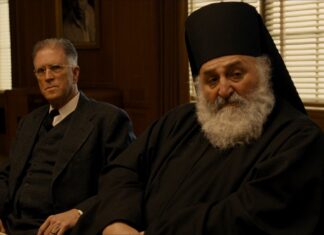NEW YORK — Prof. Thomas F. Mathews, emeritus professor at New York University’s Institute of Fine Arts, recently gave a talk on the role of Armenian architecture in the international arena, at Columbia University. The event was sponsored by the Armenian Center at Columbia University and co-sponsored by the National Association for Armenian Studies and Research (NAASR) and Columbia’s Art History Department.
Mathews, along with Dr. Helen Evans of the Metropolitan Museum of Art, had been the curator of the 1994 exhibition, “Treasures in Heaven: Armenian Illuminated Manuscripts,” featuring Armenian illuminated manuscripts at the Morgan Library and Museum, with curatorial assistant Dr. Sylvie Merian. Using many images, he pointed out that there are two recent major studies — 2001 (by Christina Maranci) and 2007 (by Judith McKenzie) — which have an important bearing on Armenian architecture. And in the study of Medieval art, there is a continuing controversy on the “rise of the cult of icons,” he noted.
In Armenian literature, there are voluminous sources of Armenia’s conversion to Christianity. However, the most neglected treatise is the Treatise on Images by Vertanes of Kertogh, which has been translated by Dr. Sirarpie Der Nersessian. An article on this treatise was published a few years ago by Mathews in the Revue des Etudes Armenienne, Vol 31, 2008-2009. “Vertanes is the Pliny of Armenia,” stated Mathews. His seventh-century Intellectual Dialogue on the Christian Use of Icons, written in Dvin, is the earliest defense of icons, and
Vertanes mentions the wood materials and even the pigments used with Persian names. These include icons of Christ, Peter and Paul, the Mother of God and Saints Gregory and Hripsime.
Mathews said that the next important intellectual in this field was John of Damascus who was secretary to the patriarch of Jerusalem in the early eighth century. “The Byzantine rulers forbade the use of icons because the people were worshipping the icons almost as idols and not as symbols of Christianity or the Christian saints,” he explained. “This was the cause of a huge conflict between the Greeks and Armenians, both doctrinally and ecclesiastically,” he said. “The icon phenomenon is larger than Byzantium.”








